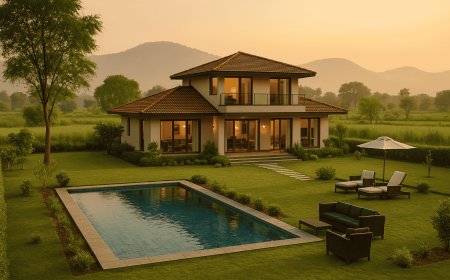Biosurfactant: Nature’s Green Solution for a Sustainable Future
Biosurfactant
In an era where sustainability and environmental safety are paramount,biosurfactanthave emerged as a revolutionary alternative to synthetic surfactants. These naturally derived molecules are produced by microorganisms such as bacteria, yeast, and fungi. Unlike chemical surfactants, which often contribute to pollution and toxicity,biosurfactantare biodegradable, eco-friendly, and highly effective in various industrial, medical, and environmental applications.
This article explores the science behindbiosurfactants, their types, production methods, applications, and why they are considered the future of green chemistry.
What Are Biosurfactant?
Biosurfactantare surface-active compounds synthesized by living organisms. They have both hydrophilic (water-attracting) and hydrophobic (water-repelling) regions, allowing them to reduce surface tension between liquids, solids, and gases. This unique property makes them excellent emulsifiers, detergents, and wetting agents.
Key Properties of Biosurfactant
-
Biodegradability Break down naturally without harming the environment.
-
Low Toxicity Safer for humans, animals, and ecosystems.
-
Thermal & pH Stability Function efficiently under extreme conditions.
-
Antimicrobial Activity Somebiosurfactantexhibit antibacterial and antifungal properties.
Types of Biosurfactants
Biosurfactantare classified based on their chemical structure and microbial origin. The major types include:
1. Glycolipids
-
Rhamnolipids Produced byPseudomonas aeruginosa, used in bioremediation and cosmetics.
-
Sophorolipids Derived from yeast (Candida bombicola), used in detergents and personal care products.
-
Trehalolipids Found inMycobacteriumandRhodococcusspecies, used in pharmaceuticals.
2. Lipopeptides
-
Surfactin Produced byBacillus subtilis, one of the most powerfulbiosurfactantwith antiviral and antibacterial effects.
-
Fengycin & Iturin Used in agriculture as biocontrol agents against plant pathogens.
3. Phospholipids
-
Found in microbial cell membranes, used in food and pharmaceutical industries.
4. Polymeric Biosurfactant
-
Emulsan Produced byAcinetobacter calcoaceticus, used in oil spill cleanup.
5. Particulate Biosurfactants
-
Microemulsions formed by microbial cells, useful in nanotechnology.
How Are Biosurfactants Produced?
The production ofbiosurfactantinvolves microbial fermentation. The key steps include:
-
Microbial Strain Selection Choosing the right bacteria, yeast, or fungi.
-
Fermentation Growing microbes in a nutrient-rich medium (carbon and nitrogen sources).
-
Extraction & Purification Separatingbiosurfactantfrom the culture broth.
-
Characterization Analyzing their structure and properties.
Advantages of Microbial Production
-
Utilizes renewable substrates (sugars, oils, agricultural waste).
-
Lower energy consumption compared to chemical synthesis.
-
Can be optimized for high yield using genetic engineering.
Applications of Biosurfactants
1. Environmental Remediation
-
Oil Spill CleanupBiosurfactantenhance the degradation of hydrocarbons by breaking down oil into smaller droplets.
-
Soil Washing Removes heavy metals and pesticides from contaminated soil.
-
Wastewater Treatment Helps in breaking down organic pollutants.
2. Agriculture
-
Biofertilizers & Biopesticides Improve soil quality and protect crops from pathogens.
-
Plant Growth Promotion Enhances nutrient absorption in roots.
3. Food Industry
-
Emulsifiers in Food Products Used in salad dressings, ice creams, and baked goods.
-
Preservation Somebiosurfactantinhibit spoilage-causing microbes.
4. Pharmaceuticals & Medicine
-
Antimicrobial Agents Effective against drug-resistant bacteria.
-
Drug Delivery Systems Improve solubility and absorption of poorly soluble drugs.
-
Wound Healing Accelerate tissue regeneration.
5. Cosmetics & Personal Care
-
Shampoos & Soaps Gentle on skin, replacing harsh sulfates.
-
Moisturizers & Creams Enhance skin hydration and texture.
6. Enhanced Oil Recovery (EOR)
-
Helps extract trapped oil from reservoirs by reducing surface tension.
Why Are Biosurfactant Better Than Synthetic Surfactants?
| Feature | Biosurfactants | Synthetic Surfactants |
|---|---|---|
| Biodegradability | Fully biodegradable | Often non-biodegradable |
| Toxicity | Low or non-toxic | Can be toxic to aquatic life |
| Production | Renewable resources | Petroleum-based |
| Eco-Friendliness | Environmentally safe | Pollutes water and soil |
| Functionality | Works in extreme conditions | May degrade under high temperatures |
Challenges & Future Prospects
Despite their advantages,biosurfactantface some challenges:
-
High Production Costs Fermentation and purification can be expensive.
-
Low Yield Some microbes produce limited quantities.
-
Market Competition Synthetic surfactants are cheaper and well-established.
Future Innovations
-
Genetic Engineering Modifying microbes for higher yields.
-
Waste-Based Production Using agricultural/industrial waste as substrates.
-
Commercial Scaling Developing cost-effective large-scale production methods.
Conclusion
Biosurfactantrepresent a groundbreaking shift toward sustainable and eco-friendly alternatives to chemical surfactants. With applications spanning environmental cleanup, medicine, agriculture, and cosmetics, these natural molecules are paving the way for a greener future. As research advances and production becomes more cost-effective,biosurfactantsare poised to replace synthetic surfactants, offering a cleaner, safer, and more sustainable solution for industries worldwide.





















![Top 11 Real Estate Mobile App Developers in Riyadh, Saudi Arabia [2025 Edition]](https://www.philadelphialivenews.com/uploads/images/202506/image_430x256_68621a9e48997.jpg)






















